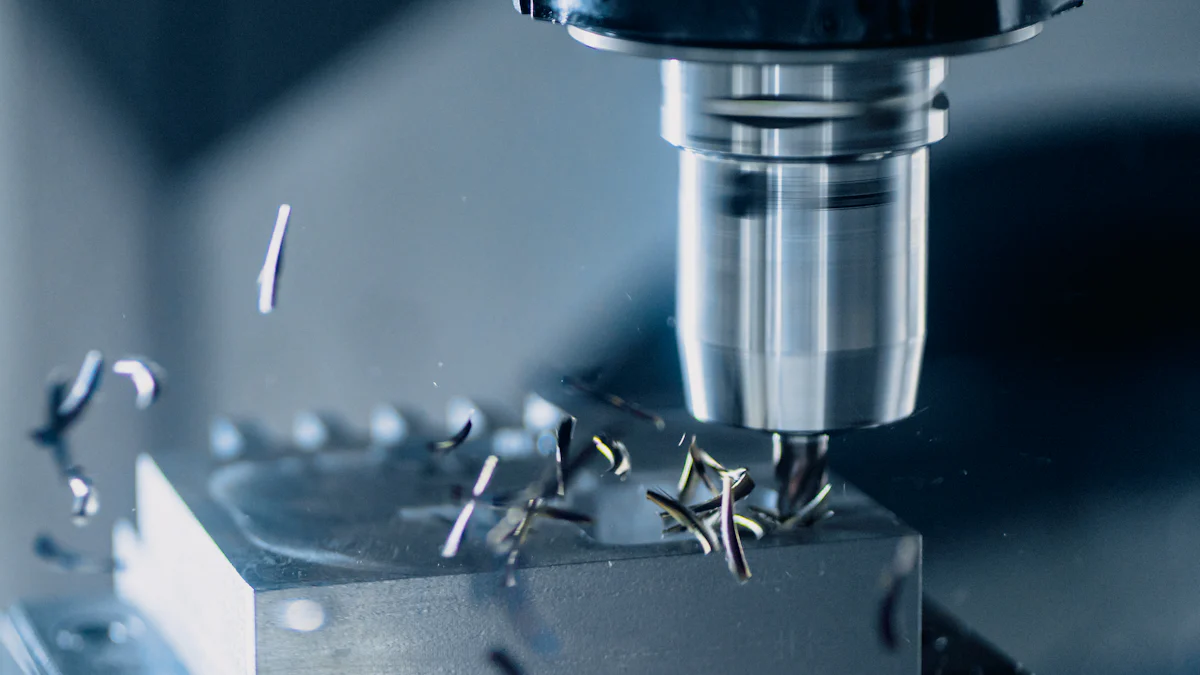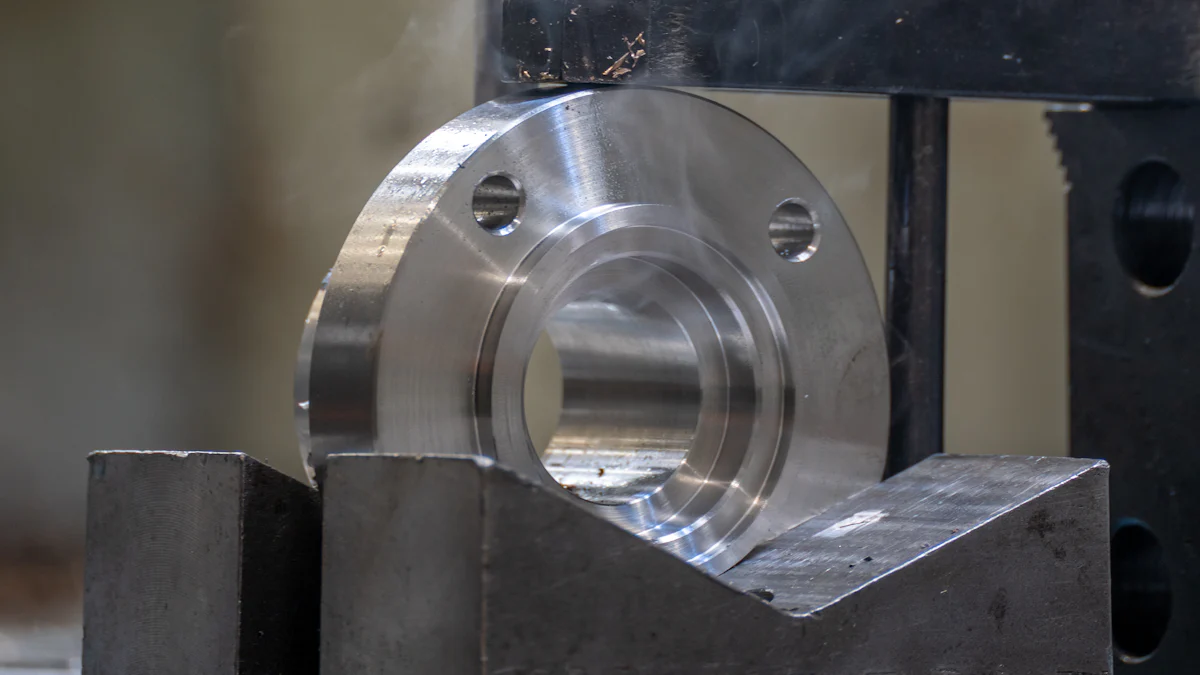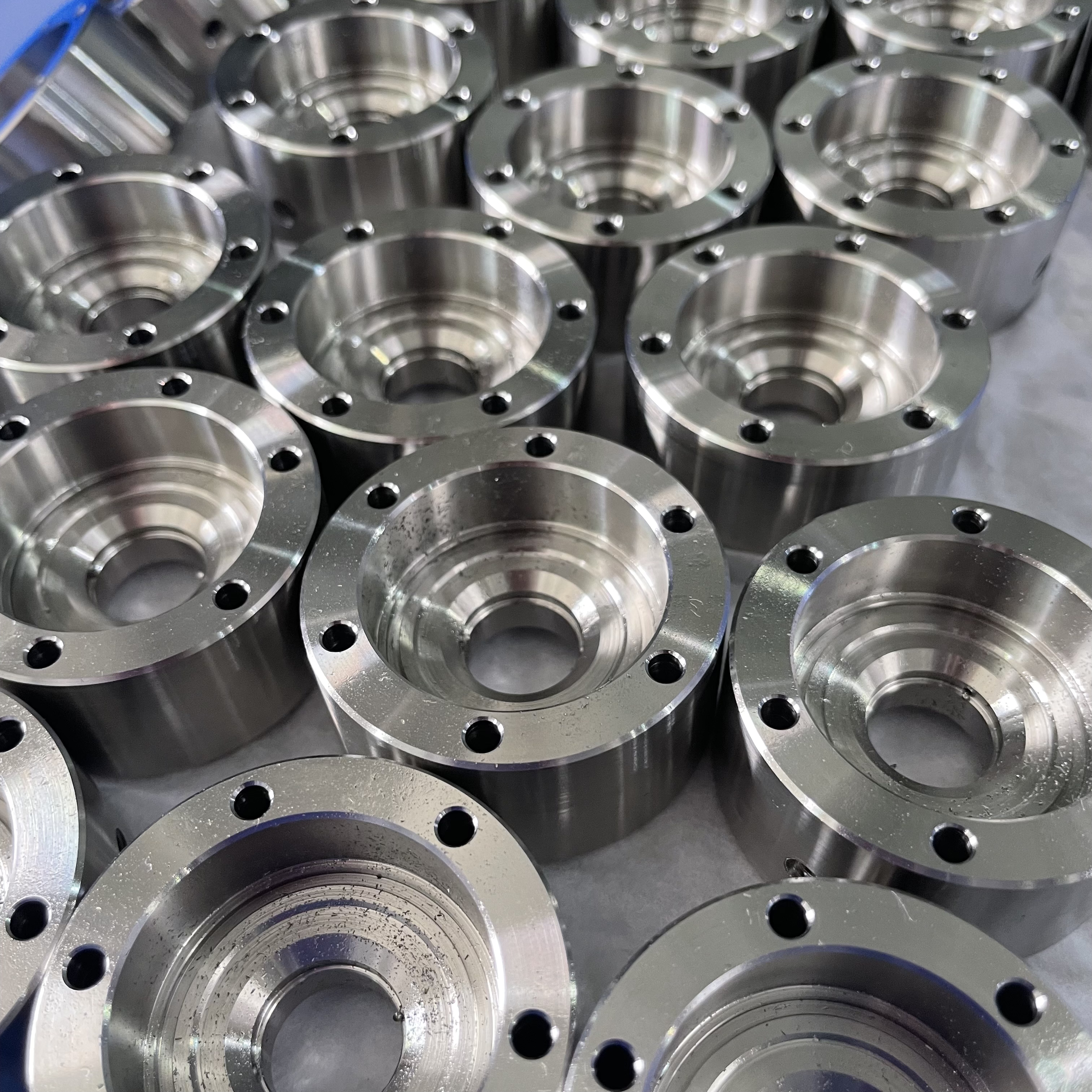How CNC Machining Improves Material Utilization Efficiency

CNC machining transforms how you use materials in manufacturing. It generates minimal waste, ensuring leftover materials can be recycled or reused. This precision allows you to craft each part with maximum efficiency, reducing the need for excess raw materials. Strategic planning in CNC machining further enhances material usage, helping you save resources and cut costs. While the initial investment may seem high, the long-term benefits outweigh it. You gain savings through reduced waste and faster production times, making CNC machining a smart choice for improving material utilization.
Key Takeaways
CNC machining cuts materials precisely, reducing waste and saving money.
Automation helps CNC machines work faster and nonstop with good quality.
Nesting techniques in CNC machining use materials wisely, cutting costs and waste.
Keeping tools in good shape and using strong materials prevents mistakes.
CNC machining helps the planet by saving energy and using fewer resources.
Understanding CNC Machining and Its Role in Material Efficiency
What is CNC Machining?
CNC machining, or computer numerical control machining, is a manufacturing process that uses automated tools to shape materials into precise components. You program the machine to follow specific instructions, ensuring consistent and accurate results. Unlike traditional methods, CNC machining relies on advanced software and hardware to control cutting tools, speeds, and movements. This automation eliminates human error and enhances the production process.
The core principles of CNC machining focus on precision and material efficiency. For example:
It achieves precise material removal, minimizing waste compared to manual methods.
It optimizes cutting speeds, feeds, and tool paths to reduce waste and extend tool lifespan.
It improves the material removal rate (MRR), leading to faster machining and higher productivity.
By understanding these principles, you can see how CNC machining transforms manufacturing into a more efficient and sustainable process.
The Importance of Material Utilization in Manufacturing
Efficient material utilization is critical in manufacturing. It reduces costs, conserves resources, and minimizes environmental impact. When you waste less material, you lower production expenses and improve sustainability. CNC machining plays a vital role in achieving these goals.
This technology minimizes material waste through precise cutting, leading to less raw material usage. It also supports the use of sustainable materials, further enhancing resource conservation. Additionally, CNC machines operate with high energy efficiency, reducing power consumption during the production process. These features highlight the importance of CNC machining in modern manufacturing.
How CNC Machining Improves Precision and Efficiency
CNC machining improves precision and efficiency by combining advanced tools, programming, and automation. Proper machine setup ensures accuracy before the production process begins. Selecting the right cutting tools based on material type enhances precision and reduces waste. Programming techniques optimize tool paths, minimizing unnecessary movements and improving efficiency.
Simulation software also plays a key role. It identifies inefficiencies before production starts, ensuring high-quality results. Automation further enhances the production process. For instance:
Bar feeders automate raw material supply, reducing downtime.
Robotic arms perform tasks efficiently, minimizing idle time.
Rotary tables enable multi-axis machining, improving accuracy and reducing setup times.
These features allow CNC machining to improve precision and efficiency, making it an essential tool for modern manufacturing.
Methods Used in CNC Machining to Optimize Material Utilization

Precision Cutting for Reduced Waste
Precision cutting is one of the most effective ways to reduce material waste in the machining process. CNC machining achieves this by utilizing advanced computer-aided design (CAD) software. You can program the machine to follow exact specifications, which minimizes cutting errors. This level of precision ensures that every cut is accurate, leaving little room for excess material waste.
Automation further enhances precision cutting. By eliminating human error, CNC machines produce identical parts consistently. This consistency not only improves efficiency but also reduces the likelihood of defective parts, which would otherwise contribute to waste. Additionally, CNC machines consume only the energy required for each task, making the machining process more environmentally friendly.
When you rely on precision cutting, you optimize material usage while maintaining high-quality production standards. This method is essential for industries where accuracy and efficiency are critical.
Nesting Techniques for Material Optimization
Nesting techniques play a crucial role in optimizing material usage during the machining process. These techniques involve arranging multiple parts within a single material sheet to maximize space and minimize waste. You start by importing part geometries into CAD software, which analyzes the shapes to determine the best layout. Advanced algorithms then generate layouts automatically, significantly reducing offcuts.
Proper orientation of parts ensures they fit efficiently on the material sheet. Adequate spacing between parts allows the milling tool to operate effectively without compromising material savings. By using clustering and nesting techniques, you can achieve optimized material usage, lower production costs, and enhanced productivity.
This approach is particularly beneficial for industries that require high-volume production, as it reduces material waste and improves overall efficiency.
Automated Toolpath Optimization
Automated toolpath optimization is transforming the machining process through advancements in artificial intelligence (AI). AI systems analyze data from CNC machines to adjust machining parameters in real time. This ensures higher precision and reduces material waste.
AI simplifies complex tasks by generating optimal toolpaths based on 3D models. It acts like a GPS for the machining process, offering alternative routes and solutions to improve efficiency. For example, AI-led solutions like DELMIA Machining automatically propose effective toolpath types, even assisting less experienced users in programming.
By automating toolpath optimization, you reduce the need for manual programming and minimize errors. This innovation enhances the efficiency of CNC machining, making it a valuable tool for modern manufacturing.
Waste Reduction Strategies in CNC Machining
CNC machining offers several strategies to help you reduce waste during production. These methods focus on improving efficiency and minimizing unnecessary material loss. By adopting these strategies, you can achieve better results while conserving resources.
Recycling and Reusing Scrap Materials
One effective way to reduce waste is by recycling leftover materials. CNC machining often produces small scraps or offcuts. Instead of discarding them, you can collect and recycle these pieces for future use. Many industries also repurpose scrap materials into new products, reducing the need for additional raw materials.Optimizing Tool Wear Management
Worn-out tools can lead to inaccurate cuts and increased material waste. Regularly inspecting and maintaining your tools ensures they perform at their best. You can also use advanced monitoring systems to track tool wear in real time. This helps you replace tools before they cause errors, saving both time and resources.Implementing Simulation Software
Simulation software allows you to test machining processes before production begins. By identifying potential issues early, you can avoid errors that result in wasted materials. This software also helps you refine toolpaths and cutting strategies, ensuring efficient material usage.Using High-Quality Raw Materials
High-quality materials often produce less waste during machining. Inferior materials may break or deform, leading to more discarded parts. By investing in better raw materials, you can reduce material waste and improve the overall quality of your products.
These strategies highlight how CNC machining can help you minimize waste while maintaining high production standards. By focusing on efficiency and resource conservation, you can achieve both economic and environmental benefits.
Benefits of Improved Material Utilization Through CNC Machining
Cost Savings and Reduced Production Expenses
CNC machining offers significant cost-effectiveness by reducing material waste and production expenses. Efficient resource use ensures you save on raw material costs while promoting sustainable manufacturing practices. CNC machines are designed to produce parts with minimal waste, which directly lowers material costs. By implementing effective planning and material utilization strategies, you can further enhance cost efficiency.
Automation in CNC machining reduces labor costs by streamlining processes and minimizing human error. The machines operate with high accuracy and repeatability, ensuring consistent quality and fewer defective parts. This reduces scrap rates and eliminates the need for rework, saving both time and money. Additionally, CNC machines can run continuously, increasing productivity and reducing the need for manual labor. These features make CNC machining a cost-effective solution for modern manufacturing.
Enhanced Sustainability and Environmental Benefits
CNC machining aligns with sustainability goals by optimizing resource utilization and reducing waste. Precise material removal minimizes waste compared to traditional methods, helping you conserve raw materials. The optimization of cutting speeds and tool paths also reduces energy consumption, making the process more environmentally friendly.
Sustainable manufacturing emphasizes resource efficiency, waste reduction, and energy conservation. By adopting CNC machining, you can lower your carbon footprint and reduce emissions. Less material waste translates to cost savings and supports eco-friendly practices. These efforts not only benefit the environment but also enhance your company’s reputation, attracting environmentally conscious customers. CNC machining’s ability to combine efficiency with sustainability makes it a valuable tool for achieving green manufacturing goals.
Increased Productivity and Operational Efficiency
CNC machining significantly boosts productivity and operational efficiency. The automation capabilities of CNC machines allow for continuous operation without breaks, enabling faster production. You can produce highly precise and complex parts with tight tolerances, eliminating the need for secondary operations. This reduces production time and ensures consistent quality, which is crucial for mass production.
CNC machines also offer flexibility by allowing you to program them for different parts without retooling. This adaptability helps you meet changing production needs quickly. By minimizing waste and optimizing processes, CNC machining enhances productivity while maintaining cost-effectiveness. These advantages give you a competitive edge in the manufacturing industry.
Real-World Applications of CNC Machining Services

Aerospace Industry: Precision and Material Efficiency
CNC machining plays a vital role in the aerospace industry by delivering unmatched precision and material efficiency. You can use this technology to create lightweight components with thin walls from robust materials, which are essential for aerospace applications. These lightweight parts enhance fuel efficiency and improve overall performance.
The ability to produce complex geometries sets CNC machining apart from traditional methods. You can fabricate intricate designs that are both lighter and stronger, ensuring optimal functionality. Automation in CNC machining ensures consistent accuracy, reducing errors and minimizing material waste. This precision eliminates the need for rework, saving time and resources.
By adopting CNC machining services, you can achieve high repeatability and tight tolerances. These features are critical for producing reliable aerospace components that meet stringent safety standards. The process not only enhances material utilization but also contributes to the overall sustainability of aerospace manufacturing.
Automotive Manufacturing: Reducing Scrap and Costs
In the automotive sector, CNC machining services help you reduce scrap material and lower production costs. Rigorous quality control ensures defects are identified early, minimizing waste. Optimized programming and effective tool management further reduce errors, allowing you to produce high-quality parts with minimal material loss.
Automation in CNC machining streamlines production, saving time and reducing labor costs. You can achieve greater accuracy and consistency, which eliminates the need for rework. This efficiency translates to faster turnaround times and higher output. Additionally, CNC machining optimizes cutting paths, reducing material waste and promoting sustainable practices.
By leveraging CNC machining, you can improve productivity and maintain cost-effectiveness. The ability to produce precision metal parts with tight tolerances ensures your automotive components meet industry standards while minimizing environmental impact.
Consumer Goods: Optimized Production and Sustainability
CNC machining services have revolutionized the production of consumer goods by enhancing efficiency and sustainability. You can speed up production processes and improve overall productivity with this technology. The precision and accuracy of CNC machining allow you to produce high-quality parts consistently, meeting the demands of scalable production.
This technology also supports eco-friendly manufacturing. By optimizing resource utilization and minimizing waste, CNC machining aligns with global sustainability goals. Precise material removal reduces greenhouse gas emissions and conserves natural resources. These practices not only benefit the environment but also enhance your brand’s reputation among eco-conscious consumers.
Whether you aim to optimize supply chain management or scale production, CNC machining offers a reliable solution. Its ability to combine efficiency with sustainability makes it an indispensable tool for modern consumer goods manufacturing.
CNC machining revolutionizes material utilization by combining precision, automation, and advanced optimization techniques. You can reduce waste through efficient cutting paths and energy-efficient operations. Industries adopting this technology report significant benefits, including lower material costs, reduced labor expenses, and enhanced sustainability. By integrating AI and IoT, CNC machining addresses modern manufacturing challenges, ensuring minimal waste and maximum efficiency. This transformative approach not only improves productivity but also supports eco-friendly practices, helping you meet sustainability goals while staying competitive in today’s market.
FAQ
What makes CNC machining more efficient than traditional methods?
CNC machining uses automation and precision to reduce waste and improve accuracy. Unlike manual methods, it follows programmed instructions, ensuring consistent results. This process minimizes errors, optimizes material usage, and enhances productivity, making it a more efficient choice for modern manufacturing.
How does CNC machining contribute to sustainability?
CNC machining reduces material waste and energy consumption. It optimizes cutting paths and uses only the required resources. By recycling scrap materials and minimizing emissions, it supports eco-friendly practices. These features help you achieve sustainability goals while maintaining high production standards.
Can CNC machining handle complex designs?
Yes, CNC machining excels at producing intricate and complex designs. Advanced software and multi-axis capabilities allow you to create detailed parts with tight tolerances. This makes it ideal for industries like aerospace and automotive, where precision and complexity are essential.
Is CNC machining cost-effective for small-scale production?
CNC machining can be cost-effective for small-scale production if you prioritize precision and quality. While the initial setup may seem expensive, the reduced waste, minimal errors, and consistent results often offset the costs. It’s a smart investment for high-quality, low-volume manufacturing.
What industries benefit the most from CNC machining?
Industries like aerospace, automotive, and consumer goods benefit significantly from CNC machining. It ensures precision, reduces waste, and improves efficiency. These advantages make it ideal for sectors requiring high-quality, complex parts with minimal environmental impact.
See Also
Streamlined CNC Machining Solutions for Accurate Production
Enhancing Quality Control Through CNC Precision Machining
Grasping Material Needs for CNC Precision Machining
About US
Follow Us
Your prototype holds unparalleled significance, and we deeply value its uniqueness. Collaborating with you during the preparation phase for running your prototype or parts is a commitment we gladly embrace. Whether it's a single part or a complex assembly, we are dedicated to selecting the optimal tools and pathways to bring your envisioned product to life.
At Precision Fab CNC Machining, we specialize in producing parts for prototypes, short runs, and high-volume production. Our prototyping machine capabilities extend across metal, plastic, and wood machining, with welding fabrication services available to complement and finalize your prototype if required.
Address
Address: Room320 10F, Building A,Nanshan international building, Dayawan District, Huizhou, Guangdong, 516001 China
Contacts
billy@timaycnc.com

